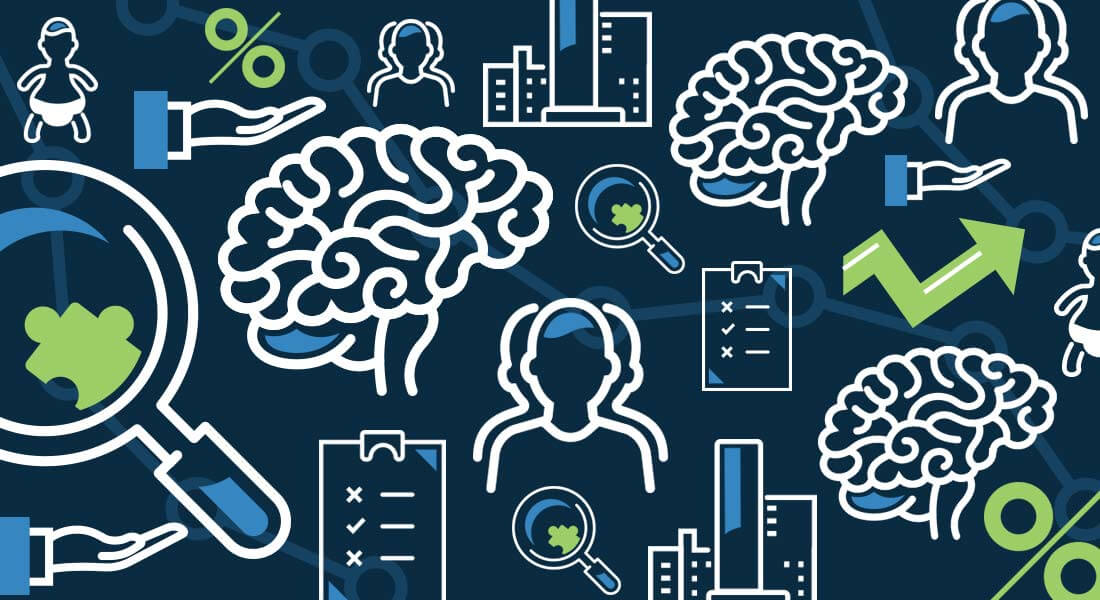What the Increased Prevalence of Autism in Children Means for You
July 19, 2018
July 19, 2018

The Centers for Disease Control and Prevention (CDC) dropped some news earlier this year: the rate of autism spectrum disorder (ASD) in children aged 8 years old has increased to one in 59. The report shows prevalence has grown across the board, with the ratio of boys to girls narrowed, as well as that among ethnic groups. At first glance, these new statistics may seem shocking to some, and we’ve fielded questions around it we feel are important to address.
“Is ASD becoming more common?”
“Do more girls have autism now than before?”
“Why is the number rising for minority groups?”
To provide context and break down why these numbers matter to our community, we turned to our Hopebridge team of experts.
The CDC’s Autism and Developmental Disabilities Monitoring (ADDM) Network is the tracking system used to provide estimates of the prevalence and characteristics of ASD for this report. It is the largest population-based program to monitor autism and the only autism tracking system that examines health and education records.
First and foremost, it’s significant to note the ADDM derived this information in 2014. We don’t yet know what the current numbers are for 2018, or even 2016, although surveillance is underway and we will have more updates in a couple years.

The rate of autism spectrum disorder (ASD) in children aged 8 years old has increased to 1 in 59.
Another aspect to remember about the new CDC report is the “one in 59” ratio is an estimated rate of autism in the United States, based on the 11 states that were surveyed (diverse communities in Arizona, Arkansas, Colorado, Georgia, Maryland, Minnesota, Missouri, New Jersey, North Carolina, Tennessee, and Wisconsin).
“The ADDM covered 300,000 8-year-old children for this study, so the numbers should not be taken lightly,” said Hopebridge Clinical Psychologist Ann M. Hetzel, Ph.D. “However, the data collected is not nationally representative and does not reflect the population of the United States as a country. There are wide discrepancies between states.”
Estimates ranged from one in 77 in Arkansas, to one in 34 in New Jersey, which is significantly greater than any other state. When comparing the reporting stats, we should not assume New Jersey has more people with autism than the others; it is likely the state offers better access to diagnostic services.
The CDC co-author of the recently released report, Daisy Christensen, shared that this government data cannot tell us exactly why the increase in the ratio occurred. Additional research is needed to answer prominent questions about the rate, but we can still look deeper into what it means for our families.
What are some of the possible reasons for the increased prevalence? It could be because it is the first time the study has had access to school information. Maybe it’s because it included additional study sites. And it is also likely due to improved identification.
“I feel strongly that the growth of the internet, as well as the heightened presence of autism organizations and the strengthening of their outreach efforts, have played a significant role in putting information about ASD directly into the hands of the public,” said Dr. Hetzel. “Armed with this knowledge about autism, parents were in a better place to request evaluations.”
As there is no reason to believe autism prevalence would vary by race or ethnicity, the changes in the rates for black or Hispanic children may also show a positive trend in identification. It could mean there is less stigma associated with seeking or receiving a diagnosis, or that services are becoming more accessible than they were in the past.
The same goes with the higher numbers in girls. ASD symptoms are not different among females, so it is interesting that more girls are given diagnoses now than they had previously.
The latest shift in intellectual ability could also support improved identification. Prior to this report, there was a higher frequency of individuals with a lower intelligence quotient (IQ), but as of 2014, we see it begin to level towards average or borderline IQs.
In the past, kids were likely referred more often for behavioral and lower functioning challenges, which were easier to identify. Since the recent results show more children with average intelligence are being diagnosed with autism, it could also lead back to improved diagnoses.
This is the first time the study has followed the Diagnostic and Statistical Manual of Mental Disorders (DSM-5) criteria for the diagnosis, which was published in 2013. Somewhat surprisingly, the changes did not seem to affect the results.
“Some feared the newer criteria for the diagnosis would narrow the focus too much. They expected the rate would drop, and therefore some who may have been previously diagnosed could now lose the option for services,” said Hopebridge Director of ABA Melissa Chevalier. “Thankfully, that doesn’t seem to be the case and we can still provide life-changing therapy to children with various functioning levels.”

Hopebridge Director of ABA Melissa Chevalier
Now that we know there will not be a drop in services due to the rate of diagnoses, we need to understand how those services could – and should – change.
“If you look at Applied Behavior Analysis now versus when I first started working in the field in 2003, you can see how therapy has morphed. In the past, we mostly saw kids with significant delays and behaviors who were older. Now we’re seeing different intellectual abilities in the children we work with and make adjustments to therapy as needed to accommodate them,” said Chevalier.
The community as a whole still needs to get better at identifying autism at earlier ages. In the meantime, it’s important we take the IQ data into consideration and adjust our practices to make sure they are inclusive of everyone on the spectrum.
“We need to be more mindful of how we provide services to those with average or borderline intelligence. They are more likely to be in school and higher functioning, but will still require support,” said Chevalier. “We need to focus more on social skills for them. We should also have better programs and funding in place to be able to transition them into traditional environments and provide added school support, such as ABA therapy.”
We can’t predict what the results for 2016 or future years will say. As we gain more access to diagnostics and awareness of the developmental markers and delays, we may continue to see the rate rise until it finally plateaus. Until then, we must carry on sharing the stories of our kiddos and educate the communities about the disorder and resources available so no one is left out from the care he or she needs.
To help spread awareness and education, we developed this infographic with key statistics about autism and its impact on families. Please feel free to share it on your social media accounts to inform others about autism and its impact on families.
*Informed consent was obtained from the participants in this article. This information should not be captured and reused without express permission from Hopebridge, LLC.
Autism Therapy
September 30, 2018
What Does Center-Based Therapy Look Like? Learn from a Hopebridge BCBA
Autism Therapy
February 02, 2018
What to Do When You Think Your Child Shows Signs of Autism
Autism Therapy
December 29, 2020
What is the Difference Between Behavioral Health and Mental Health?